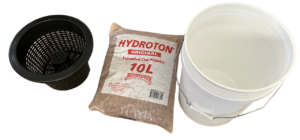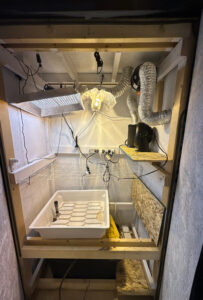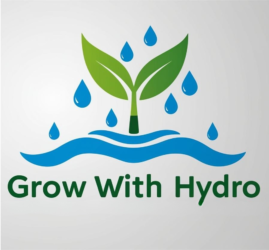Different Types of Hydroponic Systems: A Beginner’s Guide
If you’re new to the world of hydroponic gardening, welcome! It’s an exciting way to grow plants without soil, using a nutrient-rich water solution instead. Hydroponics is perfect for anyone who loves the idea of gardening but feels limited by space, soil quality, or traditional methods. But where do you start? There are several types of hydroponic systems, each with its own unique setup and benefits. Let’s break them down in simple terms so you can decide which one suits your needs.
1. Deep Water Culture (DWC)

What is it?
Deep Water Culture, often referred to as DWC, is one of the simplest and most beginner-friendly hydroponic systems. In this setup, plants are suspended above a reservoir of nutrient-rich water. Their roots dangle into the water, absorbing nutrients and oxygen.
How it works:
An air pump and air stone are used to oxygenate the water, ensuring the roots get enough oxygen. This prevents the roots from drowning and promotes healthy growth.
Pros:
- Easy to set up and maintain.
- Affordable for beginners.
- Ideal for fast-growing plants like lettuce and herbs.
Cons:
- Not suitable for larger or heavy plants.
- Requires consistent oxygenation; pump failure can harm plants quickly.
2. Nutrient Film Technique (NFT)
What is it?
The Nutrient Film Technique (NFT) is a slightly more advanced system where a thin stream of nutrient solution flows through sloped channels, passing over the roots of plants.
How it works:
The nutrient solution is pumped into one end of the channel and flows downward due to gravity. The roots absorb nutrients while also being exposed to air, which provides oxygen.
Pros:
- Efficient use of water and nutrients.
- Roots get plenty of oxygen for faster growth.
- Great for lightweight plants like leafy greens and herbs.
Cons:
- Not ideal for large or heavy plants.
- Roots can dry out if the pump fails or if there’s a blockage.
- Requires precise setup to ensure proper water flow.
3. Drip System
What is it?
A drip system delivers a slow, steady drip of nutrient solution to the base of each plant. It’s one of the most versatile hydroponic systems, suitable for a wide variety of plants.
How it works:
A pump sends the nutrient solution through tubing to individual drip emitters placed at each plant. The excess solution can be recirculated back to the reservoir or drained away.
Pros:
- Works for a wide range of plants, including larger crops like tomatoes and peppers.
- Easy to scale up for larger gardens.
- Adjustable drip rates for precise nutrient delivery.
Cons:
- Emitters can clog if not maintained properly.
- Slightly more complex to set up compared to DWC or NFT.
4. Ebb and Flow (Flood and Drain)

What is it?
The Ebb and Flow system, also known as Flood and Drain, involves periodically flooding a grow tray with nutrient solution and then draining it back into a reservoir.
How it works:
Plants are placed in a grow tray filled with a medium like clay pellets or rockwool. A pump floods the tray at scheduled intervals, providing nutrients and water. After a set period, the solution drains back into the reservoir, allowing roots to access oxygen.

Pros:
- Great for a variety of plants, including larger ones.
- Provides a good balance of water, nutrients, and oxygen.
- Easy to automate with a timer.
Cons:
- Requires careful timing to avoid overwatering or underwatering.
- Pump failure can lead to root dehydration.
- Mediums like clay pellets need regular cleaning.
5. Aeroponics
What is it?
Aeroponics is the most advanced and high-tech hydroponic system. In this setup, plant roots are suspended in the air and misted with a nutrient solution.
How it works:
A pump sprays a fine mist of nutrients directly onto the roots at regular intervals. The roots are exposed to plenty of oxygen, which promotes rapid growth.
Pros:
- Maximizes oxygen exposure, leading to faster growth.
- Uses less water compared to other systems.
- No medium needed, reducing costs and maintenance.
Cons:
- Expensive and complex to set up.
- High maintenance; misting system must function perfectly.
- Best suited for experienced gardeners.
6. Wicking System
What is it?
The wicking system is the simplest and most passive hydroponic method. It uses a wick to draw nutrient solution from a reservoir to the plant roots.
How it works:
Plants are placed in a medium like coconut coir or perlite, with a wick (such as a cotton rope) connecting the medium to the reservoir. The wick pulls the solution upward, keeping the medium moist.
Pros:
- No electricity or pumps needed.
- Very low-maintenance and beginner-friendly.
- Affordable and easy to set up.
Cons:
- Not suitable for large or fast-growing plants.
- Limited control over nutrient delivery.
Which System is Right for You?
Choosing the right hydroponic system depends on your goals, budget, and space. Here are some suggestions:
- Beginner gardeners: Start with a wicking system or Deep Water Culture. These are easy to set up and don’t require much maintenance.
- Space-saving setups: Try the Nutrient Film Technique or a vertical drip system to maximize growing space.
- Advanced growers: If you’re ready for a challenge, aeroponics offers cutting-edge efficiency and rapid growth potential.
- Versatility seekers: The Ebb and Flow system works well for a wide variety of plants and can handle larger crops.
Tips for Beginners
- Start Small: It’s tempting to go all-in, but starting with a small system will help you learn the basics without feeling overwhelmed.
- Choose Easy Plants: Leafy greens and herbs like lettuce, spinach, and basil grow quickly and are forgiving for beginners.
- Invest in Quality Equipment: Don’t skimp on essential items like pumps, timers, and nutrient solutions. Reliable equipment will save you headaches.
- Monitor Regularly: Keep an eye on water levels, pH balance, and nutrient concentrations. Regular checks can prevent small issues from becoming big problems.
- Be Patient: Every gardener makes mistakes, especially when trying something new. Treat setbacks as learning opportunities.
Final Thoughts
Hydroponic gardening opens up a world of possibilities for growing plants efficiently and sustainably. With several systems to choose from, there’s something for every skill level and gardening goal. Start with a simple system, learn as you go, and watch your plants thrive in this innovative soilless environment. Happy gardening!


This guide is an excellent starting point for beginners exploring hydroponic gardening. It clearly explains different systems like DWC, NFT, and aeroponics, highlighting their pros and cons. With practical tips and system suggestions, it simplifies decision-making for new gardeners. Easy to follow and informative, it encourages experimentation while promoting hydroponics’ benefits for space-saving, sustainable plant growth.